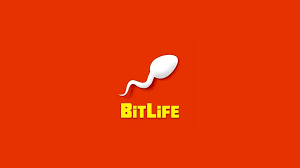In today’s world, the importance of renewable energy cannot be overstated. As the agricultural sector faces increasing challenges related to energy costs and sustainability, the USDA REAP (Rural Energy for America Program) grants offer a valuable opportunity for farmers to invest in renewable energy solutions. These grants are specifically designed to help farmers reduce energy costs, enhance farm productivity, and contribute to environmental conservation efforts through the adoption of renewable energy technologies.
What Are USDA REAP Grants?
The USDA REAP Grants are part of a broader initiative by the U.S. Department of Agriculture aimed at promoting energy efficiency and renewable energy development in rural areas. These grants provide financial assistance to farmers and rural small businesses, enabling them to invest in renewable energy systems such as solar, wind, and biomass, as well as energy-efficient upgrades to existing equipment and facilities.
Eligibility for Farmers
Farmers interested in applying for USDA REAP grants must meet specific eligibility criteria. To qualify, the applicant must be an agricultural producer with at least 50% of their gross income derived from farming activities. Additionally, the farm must be located in a rural area, which is generally defined as a location with a population of 50,000 or less. Eligible projects can range from installing solar panels and wind turbines to implementing biomass energy systems or upgrading to energy-efficient irrigation systems.
Benefits of Renewable Energy for Farmers
1. Cost Savings
One of the most significant benefits of investing in renewable energy through USDA REAP grants is the potential for substantial cost savings. Renewable energy systems such as solar panels or wind turbines can dramatically reduce or even eliminate electricity bills, freeing up resources for other farm operations. In addition to lowering operational costs, these systems often require less maintenance compared to traditional energy sources, resulting in further savings over time.
2. Energy Independence
Renewable energy grants for farmers to become more energy independent. By generating their own electricity, farmers can reduce their reliance on external energy suppliers, protecting themselves against fluctuations in energy prices. This independence not only enhances the financial stability of the farm but also ensures a more consistent and reliable energy supply, crucial for continuous farm operations.
3. Environmental Impact
Farmers play a critical role in environmental stewardship, and the adoption of renewable energy technologies aligns perfectly with this responsibility. By transitioning to renewable energy sources, farmers can significantly reduce their carbon footprint, contributing to the fight against climate change. USDA REAP grants make it financially feasible for farmers to implement these environmentally friendly practices, fostering a more sustainable agricultural industry.
4. Increased Property Value
Investing in renewable energy systems can also increase the overall value of farm property. Renewable energy installations are often viewed as valuable assets, making the property more attractive to potential buyers or investors. Additionally, the long-term savings on energy costs can further enhance the farm’s financial viability, making it a more profitable and sustainable enterprise.
How to Apply for USDA REAP Grants
Applying for a USDA REAP grant involves several key steps:
1. Project Planning: Farmers must first develop a detailed project plan, including cost estimates, energy savings projections, and technical specifications. This plan will form the basis of the grant application.
2. Application Submission: The completed application, along with all required documentation, must be submitted to the USDA. The application should clearly demonstrate how the project aligns with the goals of the REAP program.
3. Review and Approval: Once submitted, the application will be reviewed by USDA officials. Successful applicants will be awarded a grant that covers up to 25% of the project cost, with additional loan guarantees available for up to 75% of the project cost.
Conclusion
USDA REAP grants provide a unique opportunity for farmers to invest in renewable energy solutions that enhance farm sustainability, reduce operational costs, and contribute to environmental conservation. By leveraging these grants, farmers can take significant strides towards energy independence and long-term financial stability. If you are a farmer looking to make a positive impact on your farm and the environment, USDA REAP grants offer the support needed to turn your renewable energy goals into reality.





























































